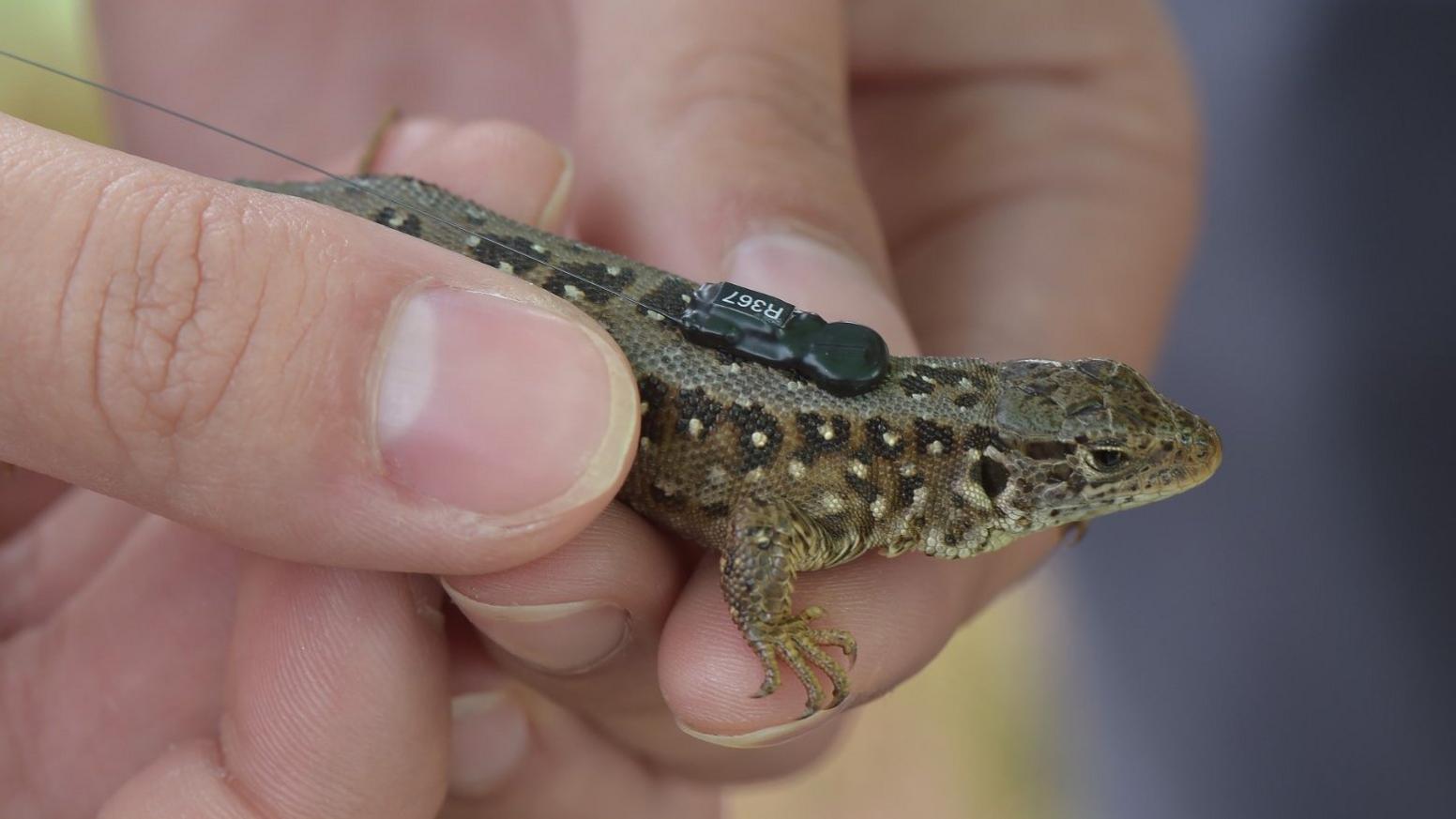Rare sand lizards reintroduced to Eelmoor Marsh
- Published

Sand lizards are protected under the Wildlife & Countryside Act 1981
Eighty juvenile sand lizards - one of the UK's rarest reptiles - have been released into the wild in Hampshire.
Conservationists from Marwell Wildlife released the creatures at Eelmoor Marsh, near Farnborough.
The animals were tagged with tiny radio transmitters as part of the group's three-year research project.
The programme has so far brought the number of lizards reintroduced at the site to 240, with the aim of creating a self-sustaining population.
Once common in heathlands across southern England, habitat loss means sand lizards are now only found in a handful of sites.
PhD student Rachel Gardner, who led the scheme, said: "It's been a privilege to work on this project and observe the sand lizards in such detail.
"We hope the research will help inform and make recommendations for the reintroduction protocol in the future, and therefore help optimise its conservation success."

Sand lizard facts:
They live on protected heathland sites in Surrey, Dorset, Hampshire and in the protected Merseyside dunes
They grow up to 20cm (7.8in) long and weigh about 15g (0.5oz)
Both sexes have brown patterns down their backs with two stripes
Their diet is mainly insects, spiders and grasshoppers

- Published28 September 2018
